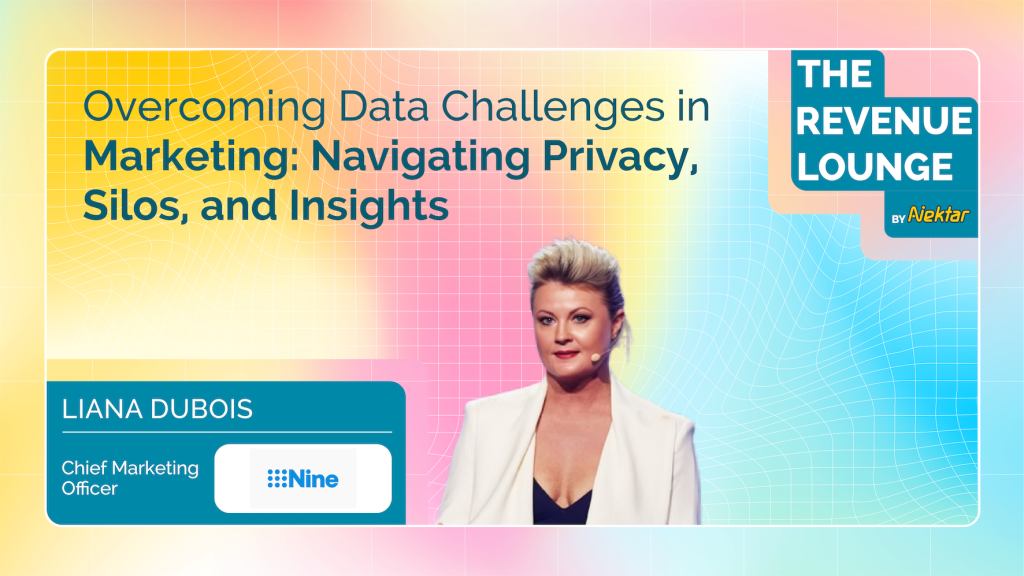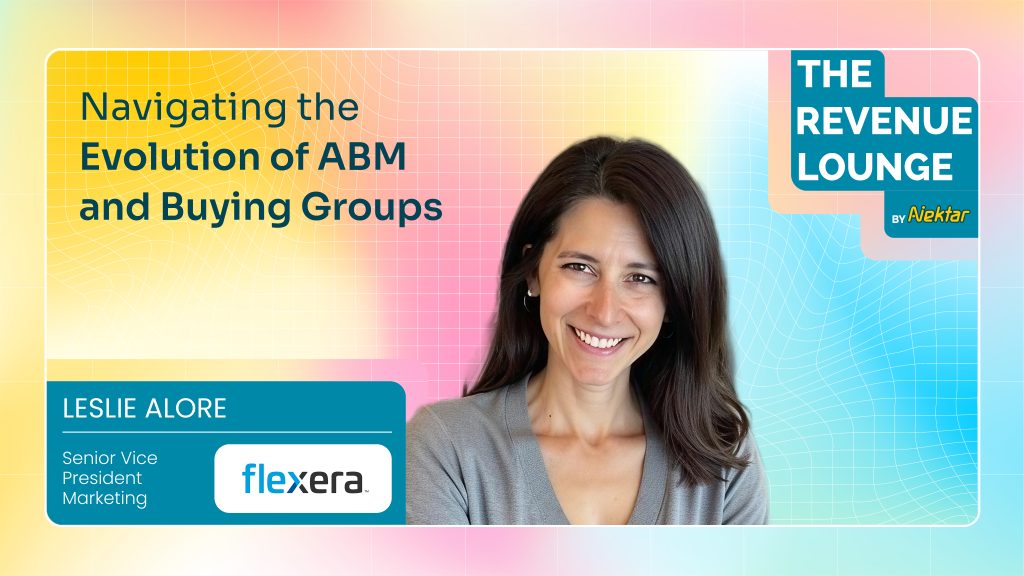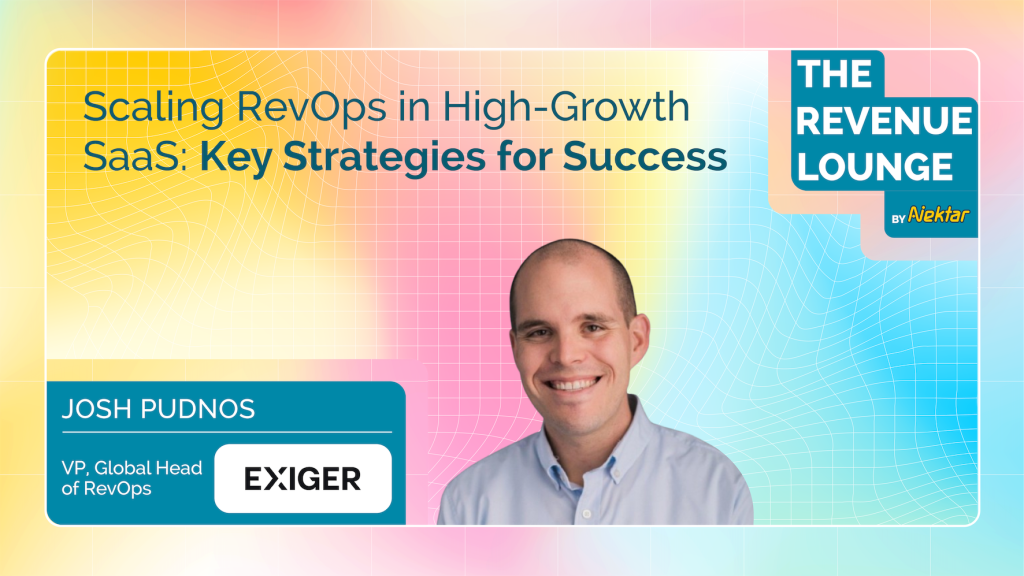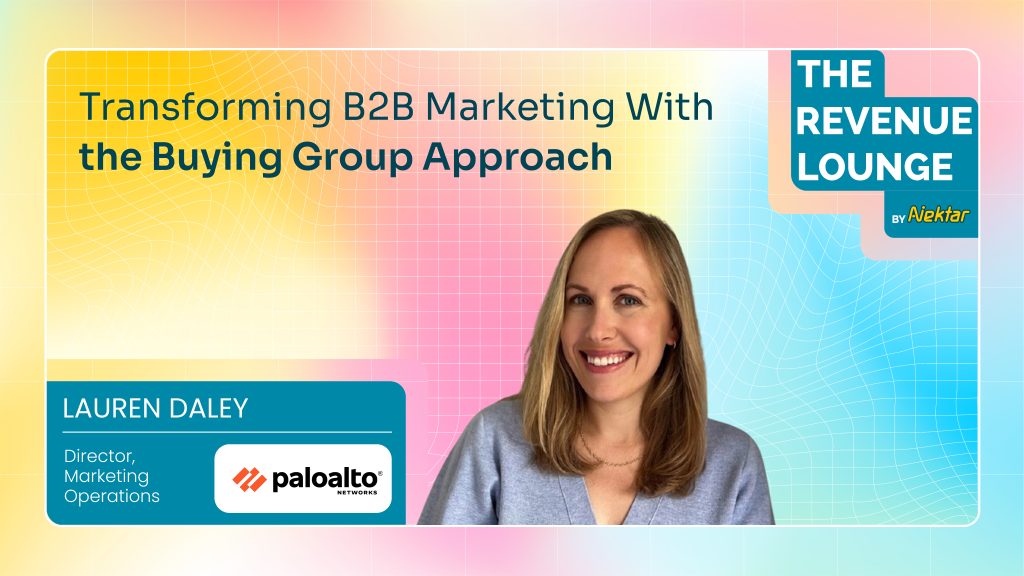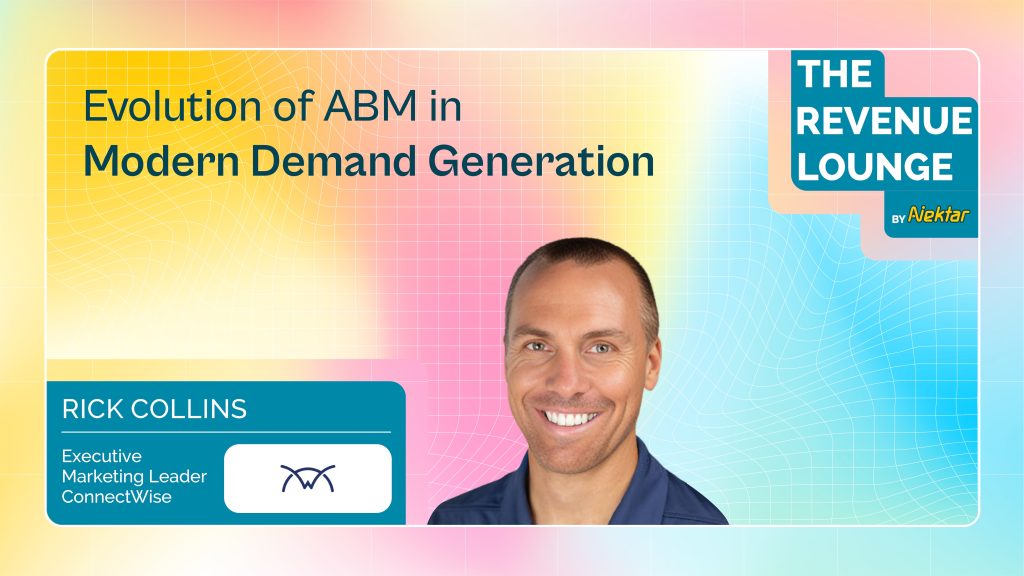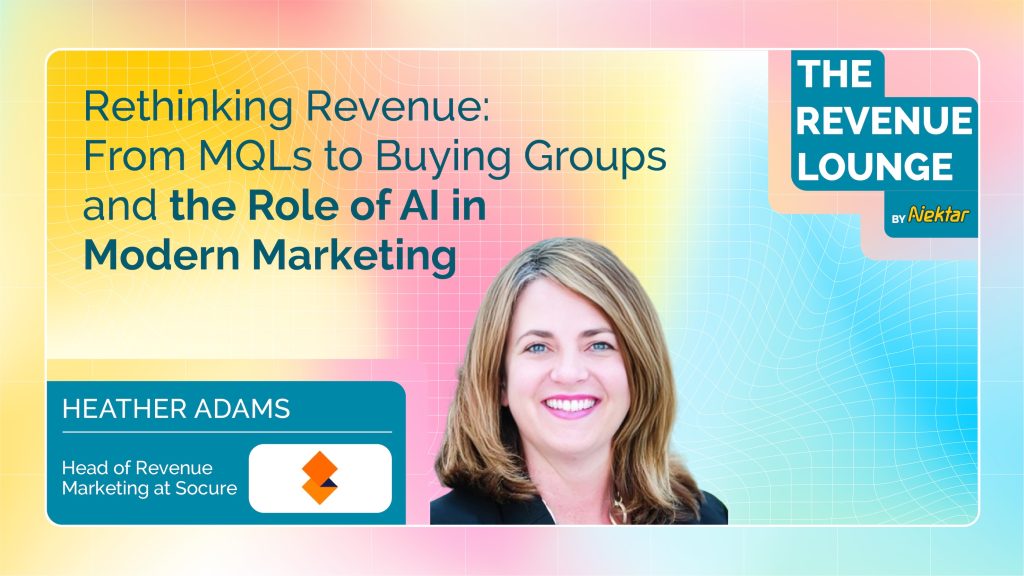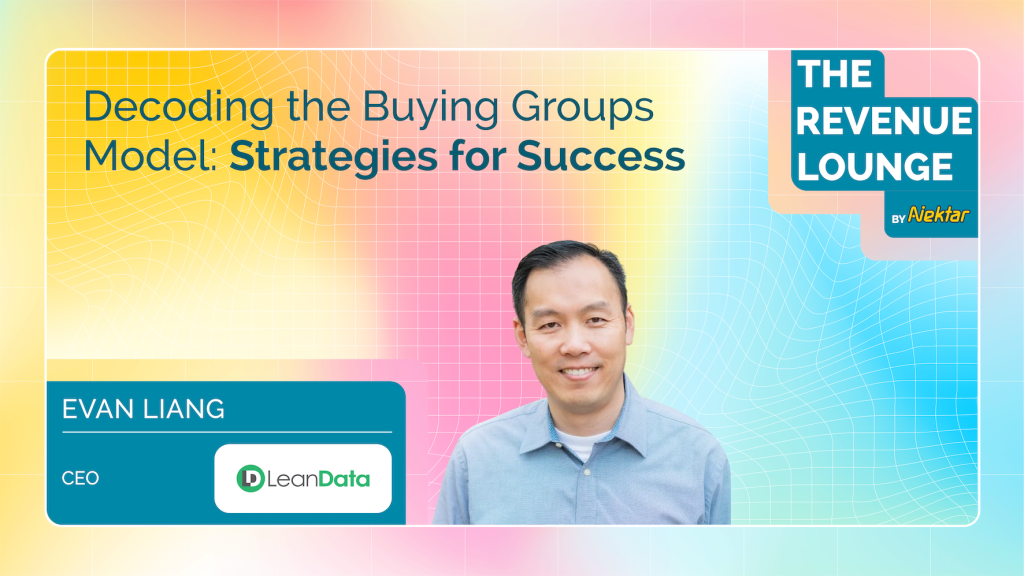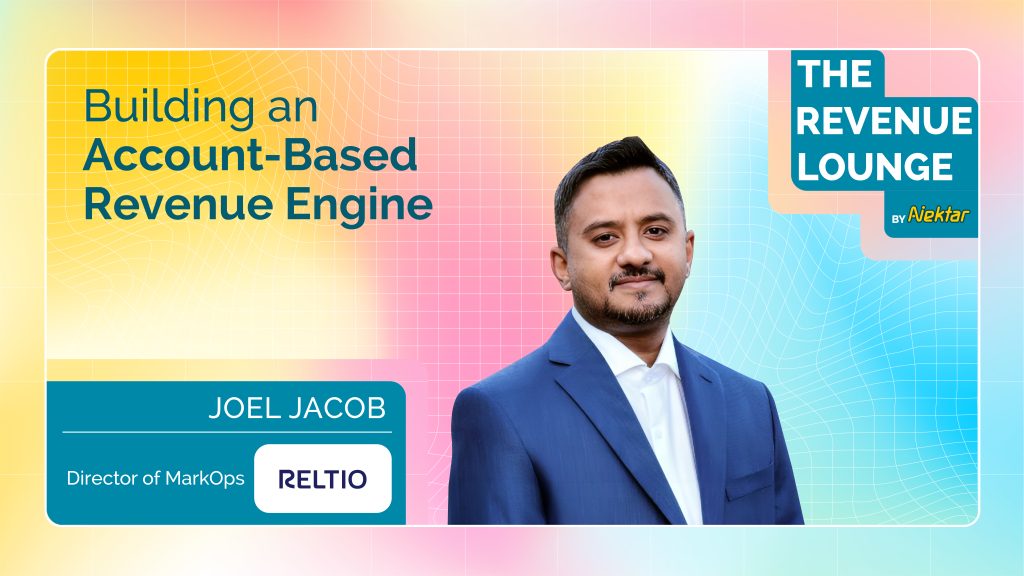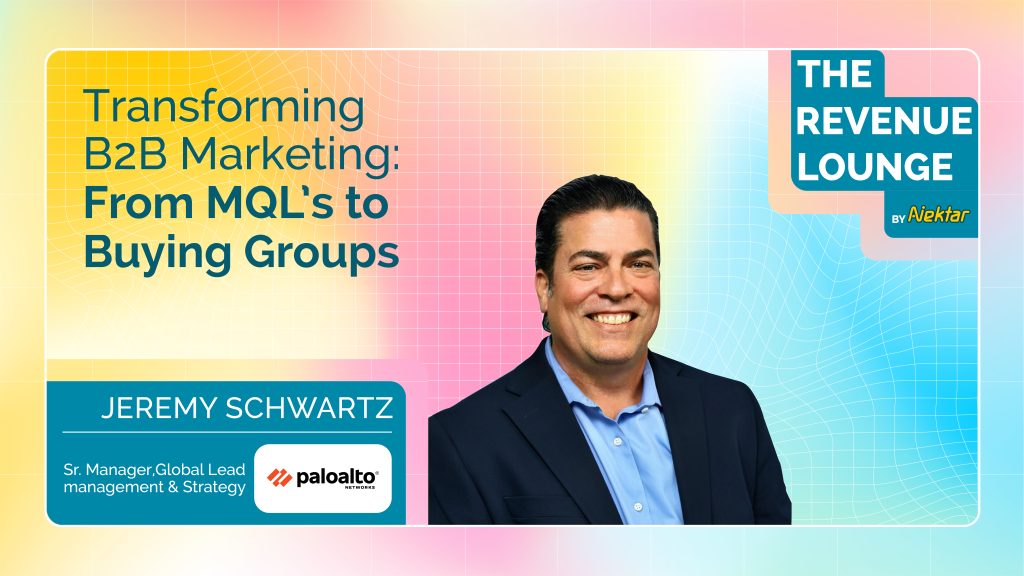Scaling GTM Teams with Data-Driven Insights & Inclusive Leadership
Scaling GTM Teams with Data-Driven Insights & Inclusive Leadership A conversation with Barbara Pawar, VP, Head of US Sales at Avanade. Scaling go-to-market teams in today’s enterprise environment has never been more complex. The stakes are higher, customer expectations are sharper, and leadership has to balance both speed and sustainability. For Barbara Merola Pawar, VP Sales & GTM (US Northeast) at Avanade, the secret to building high-performing GTM organizations lies in an unusual but powerful combination: data discipline, AI enablement, and inclusive leadership. Barbara, who has spent two decades in leadership roles across Fortune 100 enterprises and high-growth SaaS startups, has seen the evolution of sales from the inside out. In her conversation on The Revenue Lounge, she reflected on how data accuracy, coaching culture, and inclusive hiring practices are shaping the GTM playbooks of tomorrow. Her perspective is both practical and deeply human — a reminder that while technology accelerates growth, it’s people who sustain it. Facebook Twitter Youtube Data as the Backbone of GTM Every seller knows the struggle of updating CRM systems. Logging stakeholders, capturing notes, tagging loss reasons — it often feels like an administrative tax on the real work of selling. But as Barbara puts it, data accuracy is non-negotiable. “If the data in CRM is not accurate, finance can’t plan. Marketing can’t nurture effectively. Leaders can’t decide where to invest. Data is the foundation for everything.” — Barbara Pawar She remembers the days when keeping CRM updated was an endless chore, especially without remote access. Today, tools like Microsoft’s Copilot have changed the equation. Sellers no longer need to spend hours keying in updates; AI copilots automate much of the work, giving back valuable selling time while improving the accuracy of organizational data. That shift doesn’t just make life easier for sales reps — it directly influences how finance builds business plans, how marketing targets campaigns, and how leadership decides where to invest. The Ripple Effect of Bad Data: Inaccurate CRM → Misaligned forecasts Misaligned forecasts → Wrong hiring decisions Wrong hiring → Poor investment allocation Poor allocation → Broken GTM execution Sales Data Hygiene Checklist: Ensure executive sponsors are logged in CRM after every client interaction Capture loss reasons consistently and in detail Centralize meeting notes and avoid “email-only” knowledge Use AI copilots to automate repetitive updates AI as a Force Multiplier For Barbara, the biggest breakthrough of the last few years is the way AI has reshaped sales leadership. Preparing for business reviews once required combing through dashboards for half a day. Now, AI copilots can generate a consolidated view of sales and finance data in minutes. “AI isn’t replacing us. It’s enabling us to move faster, remove administrative burdens, and focus on client conversations.” — Barbara Pawar This is where technology becomes a force multiplier. AI tools are not about replacing the art of selling but about amplifying it. They allow leaders to identify anomalies in pipeline health, monitor week-over-week forecast growth, and spot at-risk opportunities before it’s too late. For frontline sellers, AI takes the administrative burden off their shoulders. For leaders, it provides context-rich insights that shape better coaching conversations. Where AI Transforms the Sales Cycle: Lead Qualification → Scoring and prioritization Deal Execution → Real-time insights on next steps Forecasting → Anomaly detection and accuracy improvement Post-Sale → Predictive churn analysis and nurture triggers https://www.youtube.com/watch?v=eBz2IU5E2pk&t=2282s The Evolution from Seller to Leader Perhaps the most relatable part of Barbara’s story is her reflection on moving from individual contributor to sales manager. As a high-performing seller, she controlled her own outcomes, built deep client relationships, and defined success in personal quota attainment. Transitioning to leadership meant letting go of that control and scaling through others. “High-performing sellers often struggle when promoted because they coach others to sell like they sold. But selling is an art—each seller succeeds differently.” — Barbara Pawar That realization reshaped her leadership philosophy. Rather than cloning her own selling style across the team, she emphasizes understanding each individual’s unique strengths. Some sellers need frequent guidance and coaching, while others only need a manager to step in when blockers arise. Barbara believes that true leadership lies in adapting your style to the motivations and personalities of your team — and in creating an environment where every seller can thrive. Weekly Coaching Framework Template: Monday → Pipeline review with a focus on deal blockers Mid-week → Coaching sessions on strategic opportunities Friday → 1:1s to align on motivation, growth, and support Building Context Through Data Barbara’s own daily routine as a sales leader underscores the importance of consistency. Every morning begins with a dashboard review — not just to check pipeline numbers but to spot trends. Is the forecast growing week over week? Are certain industries expanding faster than others? Where is pipeline coverage falling below the 3x quota threshold? She points out that data isn’t only about a sales leader’s own targets. Sometimes the most critical insights lie in the metrics of their boss or executive leadership — such as cost of sale or efficiency ratios. Leaders who only focus on their own dashboards risk missing the bigger picture. The Sales Leader’s Dashboard: Forecast trend line (week-over-week, month-over-month) Pipeline health by industry or region Win/loss breakdown Cost of sale vs. revenue efficiency Turning Losses into Learnings Not every deal can be won, but every loss can be valuable. Barbara has institutionalized the practice of loss reviews — structured sessions that involve not just the sales team but also marketing and other stakeholders. “Over 50% of lost deals are not to competitors—they’re to inaction. Reviewing those deals immediately creates learnings and opportunities for re-engagement.” — Barbara Pawar These sessions are about more than assigning blame. They’re about capturing insights when they’re fresh: What worked well? Where did the client stall? What signals could we have caught earlier? The results often feed nurture campaigns or trigger future re-engagement plays. 📌 Loss Review Agenda Template: Deal summary (from AE and SE) Reasons for loss (competitor / inaction / budget)

